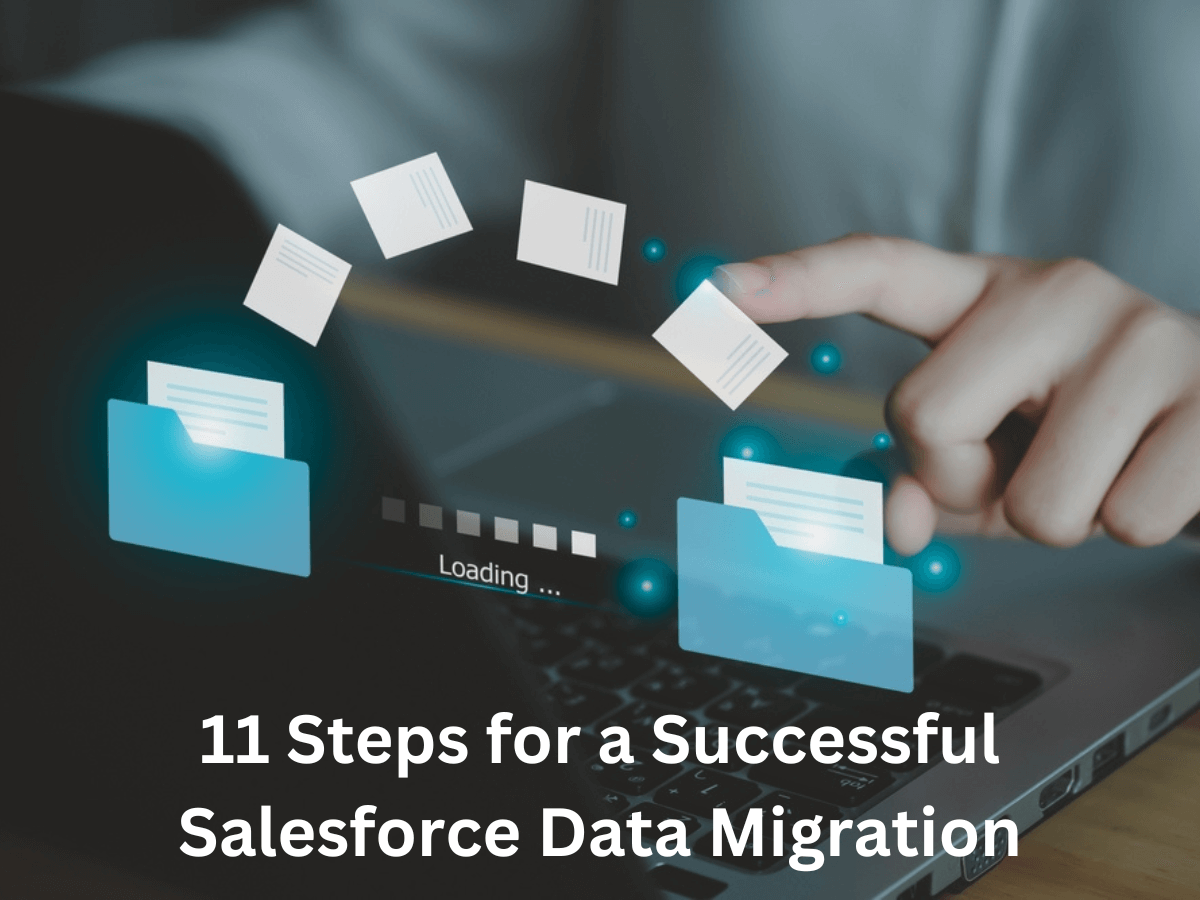11 Steps for a Successful Salesforce Data Migration
Although Salesforce data migration may seem like a straightforward process of copying and pasting, it can pose challenges when implemented in real-world situations. Effectively handling data, which is a vital asset for any company, requires thoughtful planning and strategic approaches when transitioning between systems. Salesforce is a commonly used platform for this purpose, facilitating the transfer of data from Salesforce to the target system. However, such data transfers also involve making adjustments to databases and applications.
This article is targeted to highlight several Salesforce data migration steps for a successful Salesforce data migration.
What is Salesforce data migration?
Salesforce data migration refers to the act of transferring or exporting data from Salesforce to a designated location, such as data warehouses, databases, or applications. Throughout this process, the data undergoes cleansing and optimization. Here are several characteristics of the data after undergoing Salesforce data migration:
- Relevant
- Precision
- Availability
- Exclusivity
- Dependability
Must Read: Salesforce Classic to Lightning Migration: Unlocking the Power of Lightning
Need for Salesforce data migration
There are several Salesforce data migration companies present in the market that provide successful Salesforce data migration services. The main reasons they feel the need for Salesforce data migration include:
- Revamping and substituting outdated database structures.
- Requiring state-of-the-art functionalities and specifications.
- Necessitating the utilization of a storage system, extra software, or database alongside the existing operational one.
- The outdated system must be upgraded with modern features and databases, such as the cloud or an IT module.
- Combining one or two systems to improve the overall efficiency of the infrastructure.
It is crucial to approach data migration with diligent supervision and care, as organizations consider it a significant milestone, particularly when transitioning to advanced applications such as Salesforce. This is due to the fact that manual data migration cannot be accomplished with a simple click. Transferring all data from traditional systems to the new platform is an arduous and demanding undertaking.
Steps to Perform a Successful Data Migration
The process of transferring data to Salesforce may present complexities, but by implementing thorough preparation and meticulous execution, one can guarantee a successful data migration. Here are some of the Salesforce data migration steps you can follow:
- Set migration objectives: Establishing your migration goals up front can help. Recognize the types of data that must be moved, the extent of the migration, and any unique demands or restrictions.
- Analyse your most recent data: Examine your current data in detail. Determine the data’s quality and structure, its relationships, and any cleansing or modification that is necessary before migration. This procedure aims to guarantee the accuracy, consistency, and completeness of the data you move.
- Make a data mapping plan: Choose the fields in Salesforce that the data from your source system will map to. Make a data mapping document that details which fields will be moved, any necessary data transformations, and how object relationships will be preserved.
- Salesforce environment preparation: Make sure your Salesforce org is set up correctly to accept the transferred data. If required, this entails developing unique objects, validation rules, and fields.
- Select a migration strategy: Depending on your needs, pick the best migration strategy. There are several alternatives, including using third-party migration tools, the Data Import Wizard and Data Loader from Salesforce, or creating custom scripts using the Salesforce APIs. When selecting the approach, consider elements like data volume, complexity, and time limitations.
- Execute a test migration: Execute a test migration using a sample of the data before moving all of it. This enables you to verify your data mapping, spot any problems or mistakes, and make the required corrections prior to the actual migration.
- Data cleansing and transformation: If necessary, carry out data cleansing and transformation throughout the migration process. In doing so, it is necessary to format data, combine duplicate entries, standardize values, and guarantee data integrity.
- Execute the migration: After testing and fine-tuning your migration procedure, move forward with the whole data movement. Execute the migration strategy you picked earlier and stick to the scheduled sequence. To guarantee a successful migration, closely monitor the process.
- Verify data integrity: After the conversion, carefully check the migrated data in Salesforce to ensure data integrity. To ensure the accuracy and entirety of the transferred data, it is essential to conduct a thorough comparison with the original data. To verify data integrity, run reports and do data validation tests.
- Post-migration tasks: Once the migration is finished, carry out any required post-migration tasks. This entails upgrading any automated procedures or integrations, educating users on the new data model, and carrying out a post-migration evaluation to spot any flaws.
- Keep backups and data retention: Keep backups and follow strict data retention guidelines. Preserve backups of your source data. It is essential to have a backup in case of any problems after the move.
Also Check: Top Salesforce Trends for 2023 Amazing Business Growth and Strategy
NLINEAXIS IT Solutions Private Limited is recognized as one of the most reliable companies for Salesforce data migration. Established in 2013, this software development firm comprises a team of skilled Salesforce developers who specialize in delivering exceptional CRM software.
Our developers possess extensive expertise in integrating advanced business solutions with technical Salesforce data migration services, effectively meeting the unique requirements of their clients. The firm has successfully managed complex and demanding situations, thus enhancing the capabilities of its development team.
At NLINEAXIS, customer satisfaction is of paramount importance. The company achieves this by maintaining complete transparency, ensuring clear communication, and offering round-the-clock assistance to clients.

